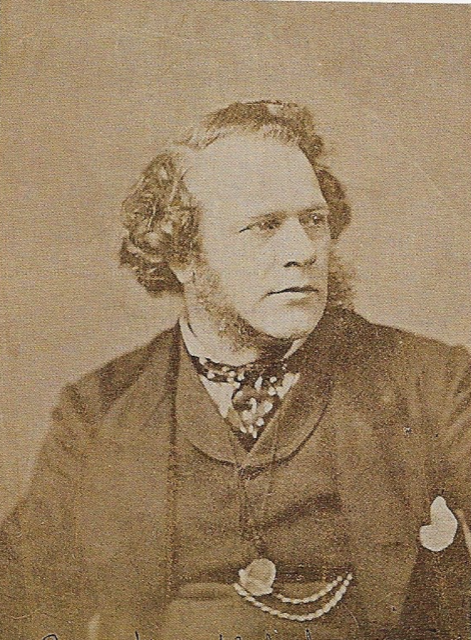William Waterhouse (1816–1890) was an English artist who predominantly focused on copying Old Masters but also produced figure subjects and portraits.[1] His interest in pursuing an artistic career probably began in Leeds, but by 1840 he had moved to London, where he could further his training. Art historian Peter Trippi considers that Waterhouse may have trained under Gustaaf Wappers at the Antwerp art academy in Belgium between 1844 and 1846.[2]
Waterhouse exhibited his paintings over a span of twenty-one years, from 1840 until his last documented exhibit in 1861.[3] A Girl of Avito at the Carnival of Rome was the first of his paintings listed as being exhibited at the Royal Academy, in 1846.[4] That same year he also submitted Guarda to the Society of British Artists.[3]
Personal life
Waterhouse was baptised on 17 March 1816 in the small West Yorkshire town of Heckmondwike; his parents were William and Hannah. His father is listed as a carpet weaver in the census when his son was born although more than two decades later he is recorded as a manufacturer of carpets, suggesting he was an effective businessman.[2]
Only meagre information is available about his first wife, Maria, and their marriage.[5] Records show the couple had two children: William Barham, born 14 July 1845, who died aged eleven months; and Albert, born 16 January 1847.[2] By this time, Waterhouse was dividing his time between living in Rome painting for a few months then transferring back to London to exhibit and sell some of his work.[6] Maria died in Rome when she was aged 28 years and was buried there on 18 January 1847, two days after producing Albert; the baby also died.[2]
Late twentieth-century academic Anthony Hobson suggests the widower first met his second wife, fellow artist Isabella MackenzieEnglish portrait painter; mother of John William Waterhouse, during 1846 at either the Royal Academy or the Society of British Artists exhibitions where they both had works displayed.[7] During one of his return trips to London from Rome, he married Isabella in Kensington Parish Church on 5 February 1848.[8][9] He took his bride back to Italy where three of their four children were born: the eldest, John WilliamEnglish artist known primarily for his depictions of women set in scenes from myth, legend or poetry. He is the best known of that group of artists who from the 1880s revived the literary themes favoured by the Pre-Raphaelites. , was born in 1849; Edwin, who was baptised on 2 June 1850; and Jessie, born on 22 February 1853, their only daughter. The couple’s youngest child, Charles, was born in 1855 after they had permanently relocated back to Britain in 1854 although he was not baptised until 18 May the following year.[8][10]
Isabella died, aged 36, on 8 September 1857 of tuberculosis at the couple’s Kensington home;[11] their two younger sons, Charles and Edwin, also died from tuberculosis in adolescence.[12][a]Charles died 4 December 1871, aged 15; Edwin died earlier when he was an adolescent.[12] Waterhouse married for a third time on 18 April 1860; his bride was Frederica Mary Jane Perceval. A cousin of Lord Egmont and Arden, she was a grand-daughter of Spencer Perceval, the assassinated prime minister. They had two sons, Frederick and William, and two daughters, Mary and Alice; all the children were born in Kensington between 1861 and 1870. Frederica was not only well connected but also had sufficient income to allow the family a prosperous lifestyle.[b]The Perceval family had received monetary compensation from the Government following the assassination; Frederica had been one of the beneficiaries.[5] Waterhouse continued to paint the occasional portrait although he ceased submitting exhibits after 1861.[11]
Death
Waterhouse died in January 1890 while on holiday in Boulogne-sur-Mer, where he was buried on 27 January.[13] Frederica survived him, dying on 14 February 1903; her assets of £1,076 passed to her youngest son, William.[14]


